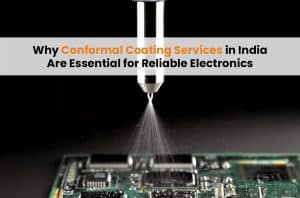The supply chain is a critical part of PCB manufacturing, which forms the backbone of most modern electronics. As an Electronics Manufacturing Services (EMS) company, managing the PCB supply chain comes with various challenges, from sourcing raw materials to ensuring timely delivery. These challenges have only become more pronounced in recent years due to global disruptions, increasing demand, and evolving technology. In this blog, we will explore the key challenges in PCB supply chain management and provide strategies to overcome them.
1.Global Supply Chain Disruptions
In today’s interconnected world, global supply chains are exposed to a wide range of disruptions, such as natural disasters, geopolitical tensions, and pandemics. The COVID-19 pandemic, for instance, caused unprecedented delays in sourcing raw materials for PCBs, leading to extended lead times.
Key Challenges:
- Increased demand for electronic products during the pandemic led to a severe shortage of raw materials, making it difficult to meet PCB production deadlines.
- Global shipping congestion has caused delays in the transportation of materials, further disrupting production schedules.
Strategies to Overcome:
- Work with multiple suppliers from different regions to avoid over-dependence on a single source in the PCB supply chain.
- Adopt real-time tracking and forecasting tools to manage inventory levels effectively and predict shortages before they occur.
2.Rising Material Costs
The rising costs of raw materials like copper, gold, and substrates have a direct impact on the cost of manufacturing PCBs. Fluctuations in material prices can make it challenging to keep production costs under control while maintaining profitability.
Key Challenges:
- The price of copper, a key material in PCBs, has seen significant fluctuations due to demand from other industries and global supply constraints.
- Many suppliers increase prices without much notice, leaving manufacturers with higher input costs.
Strategies to Overcome:
- Lock in prices with suppliers through long-term contracts to minimize exposure to price fluctuations in the PCB supply chain.
- Identify alternative materials or suppliers that offer cost-effective options without compromising on quality.
3.Quality Control and Traceability
Maintaining high-quality standards is crucial in PCB manufacturing, as even a minor defect can compromise the performance of the entire electronic device. Ensuring traceability throughout the supply chain is vital for identifying and addressing potential quality issues.
Key Challenges:
- With the rise of counterfeit materials, ensuring the authenticity of each material has become a major challenge.
- Limited visibility into suppliers’ manufacturing processes can make it difficult to ensure consistent quality across all stages of production.
Strategies to Overcome:
- Regularly audit suppliers to ensure they meet quality standards and have proper processes in place to prevent defects.
- Use advanced traceability technologies to track components from their origin to the final assembly.
4.Lead Time and Demand Forecasting
Accurately forecasting demand and managing lead times are critical for PCB manufacturers to meet tight production schedules. Inaccurate forecasts can lead to overproduction, underproduction, or missed deadlines, severely impacting an EMS company’s ability to meet customer expectations.
Key Challenges:
- Sudden changes in customer demand or order volumes can strain production capacity and supply chain planning.
- Lead times for critical raw materials like copper and gold make it difficult to align production timelines with customer needs.
Strategies to Overcome:
- Implement predictive analytics tools to forecast demand more accurately based on historical data, market trends, and customer behavior.
- Collaborate closely with suppliers to gain better insights into lead times and proactively adjust production schedules to avoid disruptions.
- Adopting a Just-in-Time (JIT) inventory system can help align material deliveries with production schedules, reducing excess inventory while ensuring materials arrive when needed.
5.Sustainability and Compliance Issues
As sustainability becomes an increasing priority in the electronics industry, PCB manufacturers face the challenge of ensuring compliance with environmental regulations and adopting eco-friendly practices. Compliance with standards like RoHS (Restriction of Hazardous Substances) and REACH (Registration, Evaluation, Authorization, and Restriction of Chemicals) is essential for accessing global markets.
Key Challenges:
- Keeping up with changing environmental regulations across different regions can be complex and time-consuming.
- Meeting the demand for greener electronics and reducing the carbon footprint of manufacturing processes adds to the challenges.
Strategies to Overcome:
- Conduct regular audits to ensure compliance with environmental and safety regulations.
- Partner with suppliers who prioritize sustainability and offer eco-friendly materials that comply with global standards.
Conclusion
Overcoming the challenges in PCB supply chain management requires a proactive, strategic approach. By diversifying suppliers, improving demand forecasting, maintaining stringent quality controls, and embracing sustainability, PCB manufacturers can navigate the complexities of the global supply chain. Staying ahead of these challenges is critical not only for meeting production deadlines but also for maintaining customer satisfaction and driving long-term growth.
As an EMS provider, we understand the complexities of the PCB supply chain and are committed to implementing best practices that ensure efficiency, cost-effectiveness, and reliability. Our expertise in PCB assembly in Bangalore positions us to address these challenges effectively. By continuously evolving our strategies, we help our customers stay competitive in an ever-changing marketplace, where the demand for PCB assembly in Bangalore is on the rise.
In conclusion, investing in efficient supply chain management for is essential for success in today’s electronics market. By tackling these challenges head-on, we ensure that our clients can rely on us for timely deliveries and high-quality products.


